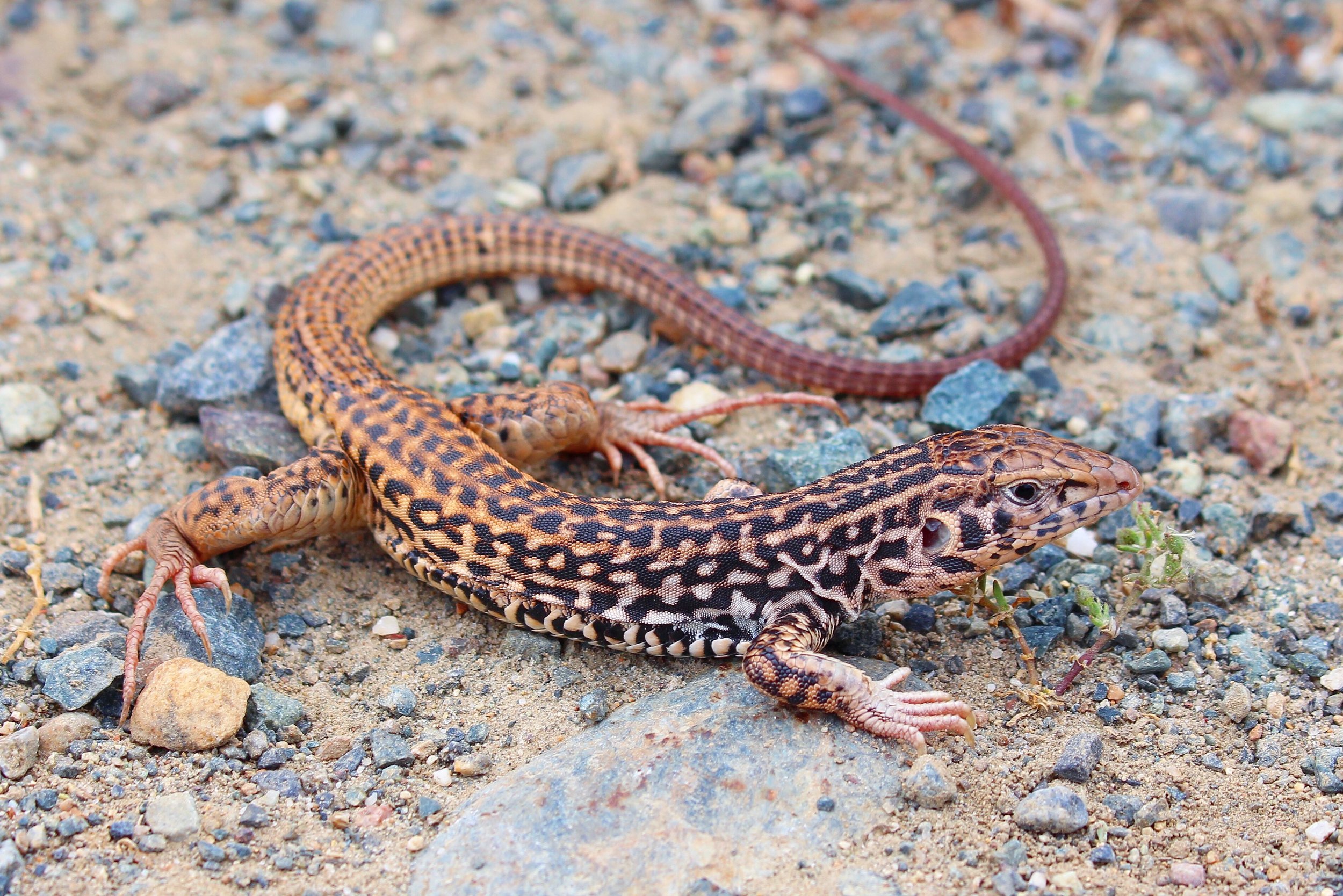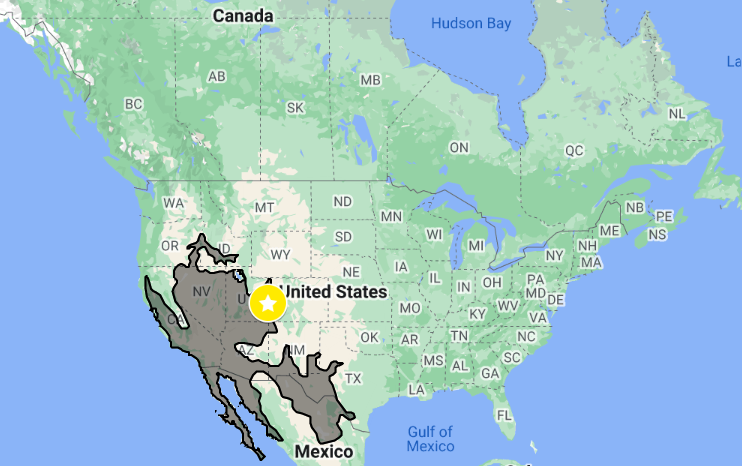The Tigers of 270 Pope
Western Whiptail (Aspidoscelis tigris)
Beside the tire of an SUV parked at 270 Pope Lane, a drama of life and death is about to play out. A large black beetle makes its way over a reddish patch of dry, bare soil in the midmorning sun. Suddenly, reptilian jaws snap over it. The bite partially crushes its exoskeleton before rapidly withdrawing. A Western Whiptail lizard, perhaps six inches long and decorated with a sextet of honey-hued stripes, has targeted the beetle. The whiptail strikes again, leaping twice or thrice its own body length before nimbly springing back. It pounces again and again in this manner until at last the beetle ceases to twitch.
The dance of saurian hunting that has played out under the SUV is millions of years old, dating back to the initial evolution of reptiles. And indeed the Western Whiptail has a proud heritage: whiptails are in the broader Teiidae family, which emerged around 125 million years ago. The exact place of whiptails within this family has been a disputed matter among humans for the geologic eyeblink of the last century. Around twenty years ago, the genus name Aspidoscelis, meaning shield-legged, emerged triumphant. The Western Whiptail’s species, ‘tigris’ or tiger, derives from the striped back of the lizard. Considering the ferocity with which it hunted the beetle, however, the comparison to a big cat is appropriate on multiple levels.
The illustrious clan of Teiidae includes New World lizards such as the Western Whiptail, the six-lined racerunner of the American South, and the tegus lizards of Central and South America. Back in the Cretaceous Period when Teiidae arose, the landscape around 270 Pope Lane was under a vast, shallow ocean. The forefathers of Aspidoscelis tigris must have been delighted to colonize as the water slipped away and the igneous intrusions of the La Sal Mountains were exposed from under crumbling layers of sedimentary rock. The imposing pillars of stone that give Castle Valley its namesake are far younger and more fleeting than the six-inch lizards that hunt in their shadows.
Oblivious to this, the tiger of 270 Pope keeps all attention upon its insect prey, which is far too large to fit down its small gullet. Basking in the sun, it begins to rip the carcass apart. First come the legs, which it pulls one by one with ravenous bites. Then, it severs head from torso and chews meditatively on the former, seeming to savor it. A gust of sand laden-wind kicks up, but the tiger resolutely clings to its meal, anchoring its four-clawed feet into the cheatgrass duff on the edge of the road until the storm passes. Unperturbed, it tears the beetle’s abdomen in half, swallows each piece, and then, flicking its tail, hides under the unmoving vehicle nearby.
The lizard which has hunted this beetle is hardly alone on this five-acre territory. Numerous whiptail lizards live at 270 Pope Lane, hunting insects and arachnids which dwell close to the ground. Whiptails like open space and places to bask in the sun interspersed with cover they can hide beneath, and so they gather here in the stand of native plants and open ground that human residents have cultivated. Here, they can escape the surrounding cheatgrass sea, whose crowded, choking duff obscures their hunts and leaves them vulnerable to predators.
Whiptail lizards are largely unafraid of humans and their habitations. As the day wears on the tiger and its kin gather at the edge of the adobe patio or on the metal cap over the septic tank, where they crawl about the edges, searching under the cracks for invertebrate morsels. Shadows passing over the whiptails will drive them into alarm, recalling their healthy fear of predatory birds.
The whiptails’ family tree includes unisexual branches, populations consisting entirely of females. In these subspecies, mother lizards lay eggs which hatch into their identical daughters, clones which can perpetuate their genetics without the help of men. This process is called parthenogenesis. (Sometimes these virgin births require a ritual of ‘simulated copulation’ between two females in order to induce them, which distinguishes parthenogenesis from the asexual reproduction of many simple organisms.) The sapphic societies of whiptails typically last a million years or so before their genetics fail or they rehybridize into a bisexual species. This trick may allow Aspidoscelis to survive hostile or unknown environments, preserving itself until sexual reproduction can begin anew. Or, it may be a simple quirk of evolution without a specific purpose. Either way, this trait reflects the essential mutability which has allowed whiptailed lizards to endure across many environments for millions of years, and which will likely ensure their survival long after the humans, SUVs, and even the stones of Castle Valley have crumbled to dust.
By Sam Allen



